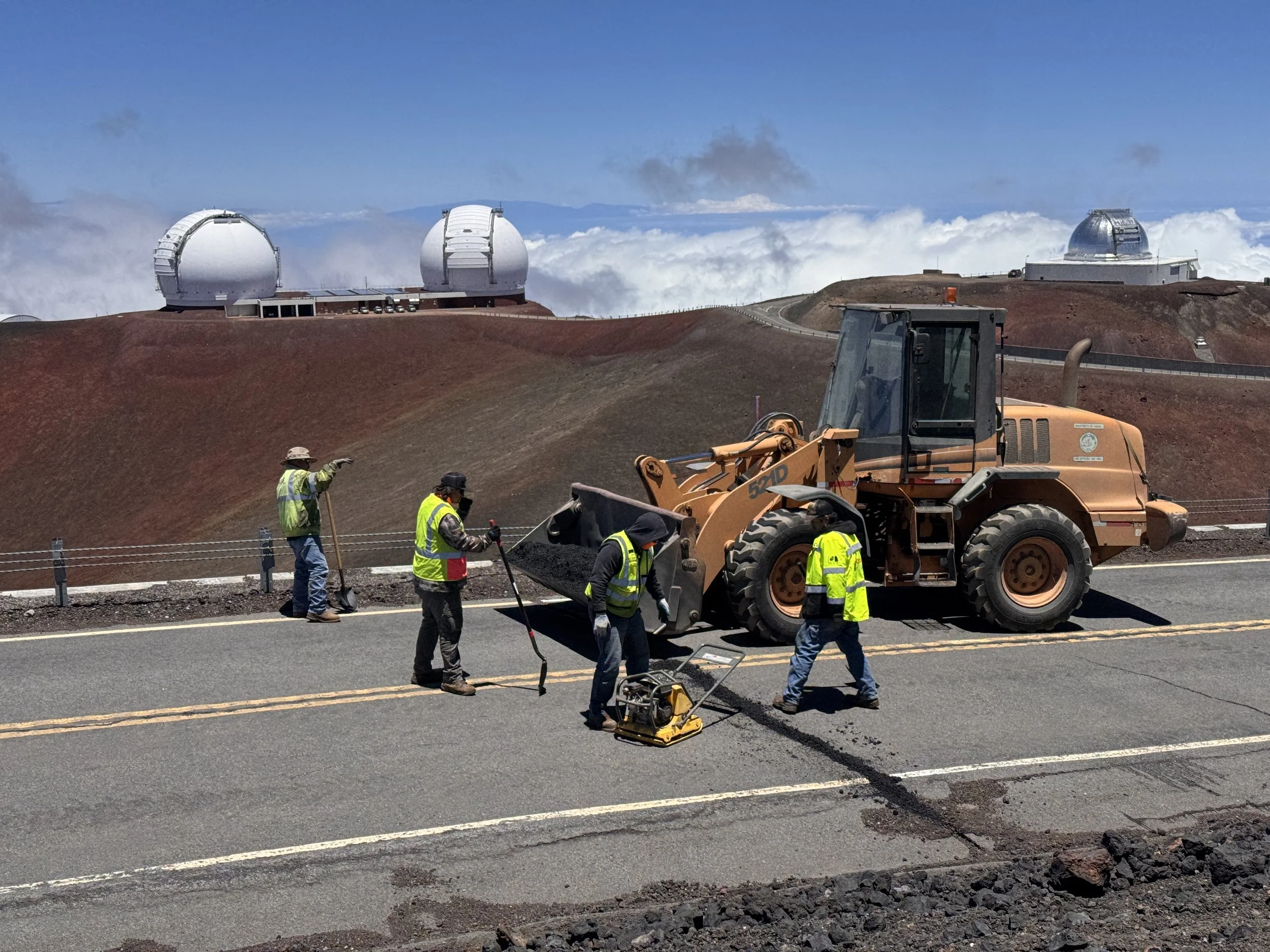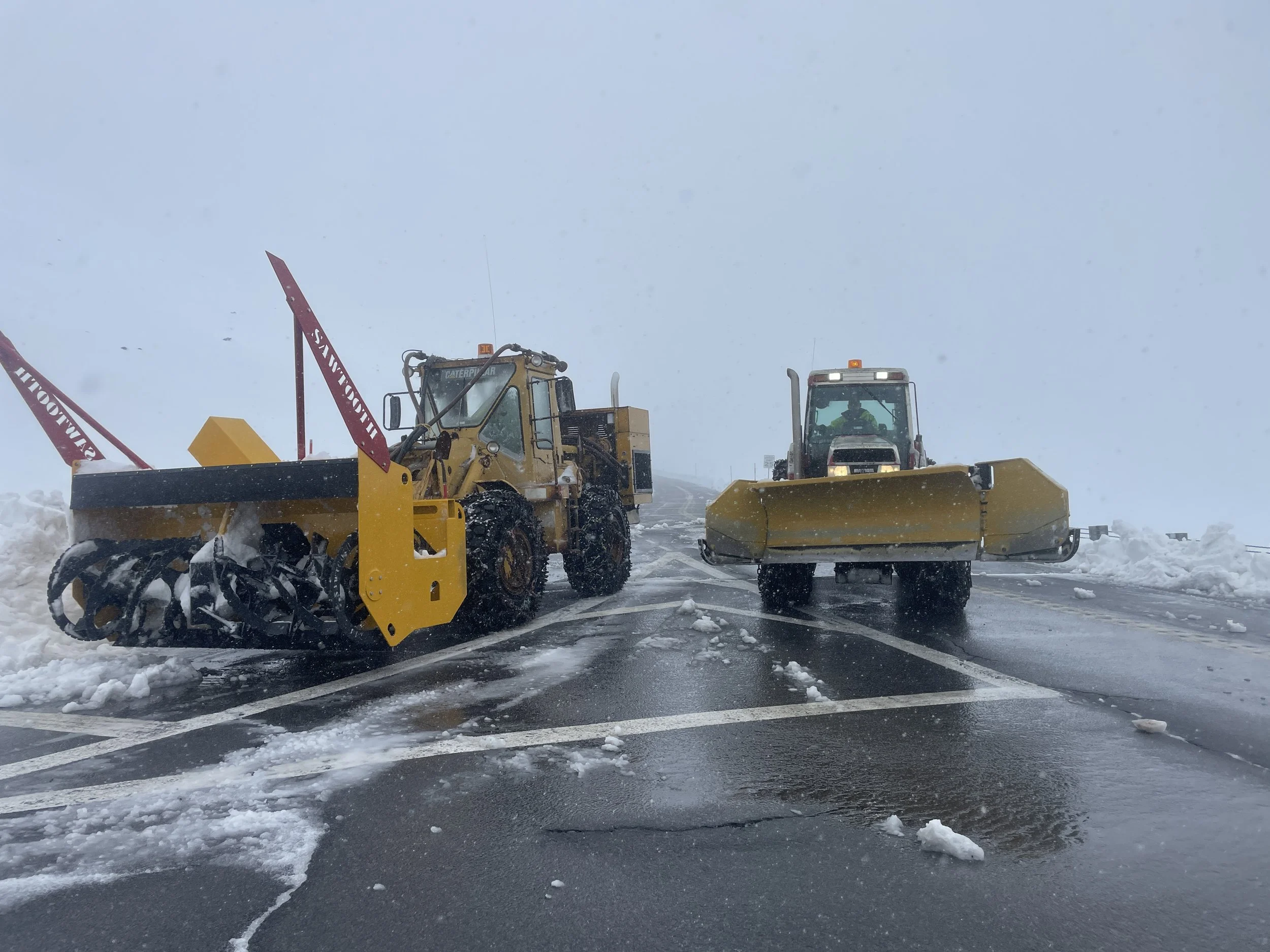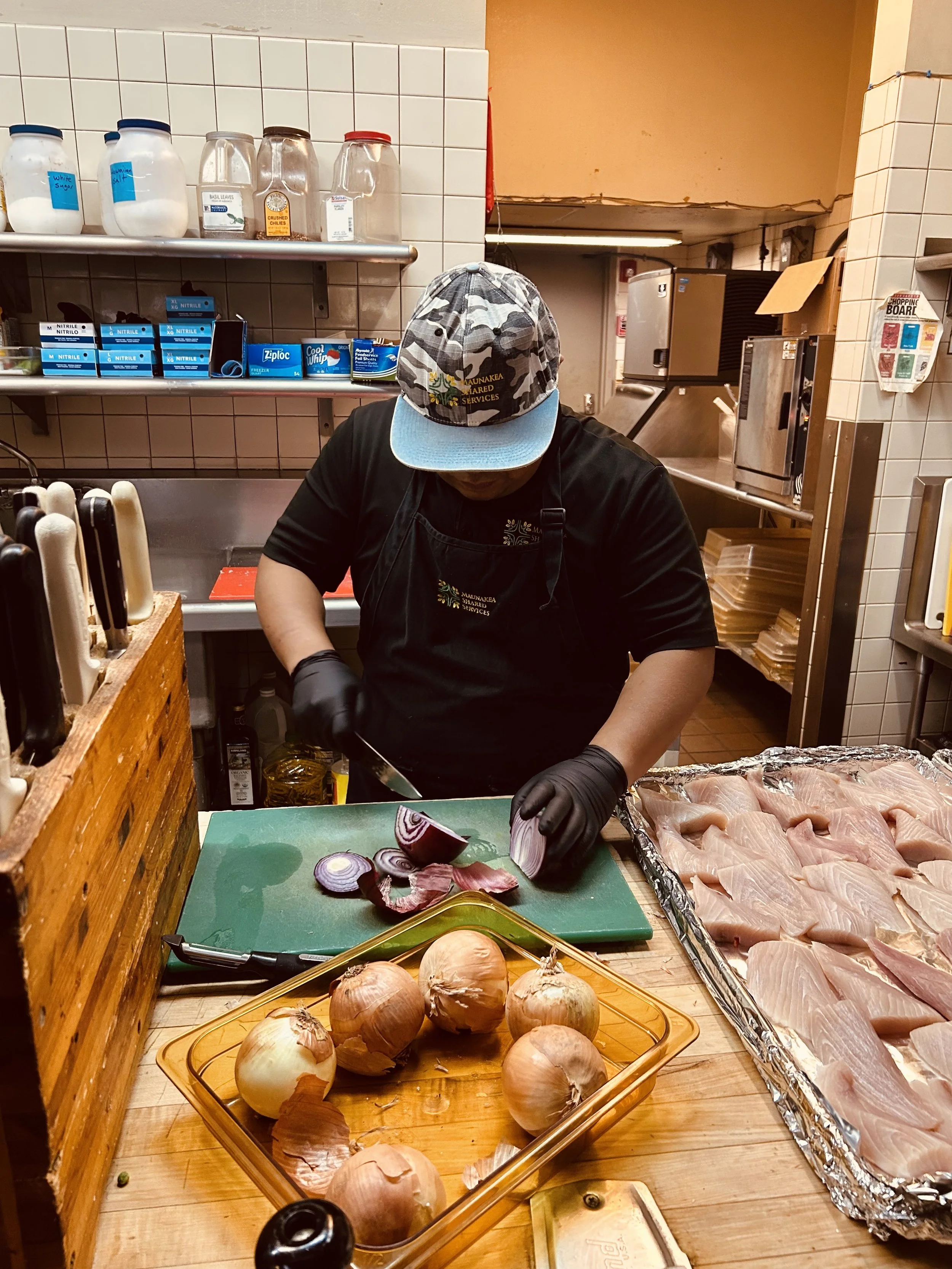Maunakea Shared Services: Making MKO Science Possible, Behind the Scenes
Five miles of safe gravel road to travel on each day as you make your way to the summit. A warm meal delivered to you in the middle of a long shift. A comfortable room to sleep in each night, 9,200 feet above sea level. The Utilities and Food & Lodging teams of Maunakea Shared Services (MKSS) work tirelessly to provide these services to the scientists who work and stay on Maunakea each day. “Their work is essential but isn’t something people necessarily see,” said Rodrigo Romo, the general manager of MKSS. “The role that these two teams play in the success of the operations on the mauna is critical.”
Utilities - Getting Around Safely on the Mauna
Firstly, getting up to the top of Maunakea is no small feat, but the MKSS Utilities team makes it possible. “They keep the road open, safe, and accessible in all conditions,” said Romo, who oversees the utilities operations. They’re the first ones to clear the roads when it snows, prioritizing clearing all the way up to the summit to ensure staff have access to the observatories. Next are the parking lots, then clearing down to the base so the general public can travel up safely. The Utilities team also takes care of all maintenance issues in the mid-level facilities, which include Hale Pōhaku’s common building, the dormitory buildings, the Visitor Information Station, and cabins. They also offer and perform maintenance support to the observatory facilities when requested.
Erosion management on the mauna is also critical, especially with worsening climate disasters. In normal conditions, the Utilities team regrades the entire five miles of gravel access road twice a week. They also run a magnet over the gravel road once a month to remove any metal objects that may have accidentally fallen on the road, preventing any damage to the hundreds of vehicles that use it.
Last year’s Hurricane Hone brought the worst erosion damage to Maunakea that they had ever seen, said Romo. They spent every day of the next three weeks doing damage repair, including large cracks, landslides, and road rebuilding. As the severity and frequency of tropical storms is sure to increase in the coming years due to climate change, dealing with damage to the roads on Maunakea is likely to increase for the Utilities team.
The rugged, exposed conditions atop Maunakea mean that the team could be working in a snowstorm, harsh and cold weather, and mighty winds that sometimes reach up to 100 mph at the summit. Romo summarized it well: “It’s nothing short of heroic.”
And to boot, all of this work is accomplished by only six employees. They come from multidisciplinary backgrounds, each bringing their own unique skill sets. They then cross-train and teach each other. It’s a unique learning environment, and one that has given these six employees incredibly vast skill sets. They are simultaneously heavy machinery operators, mechanics, electricians, and more. Some have been a part of the Utilities Team on Maunakea for over thirty years. “Together, these six guys have the experience of fifteen, maybe twenty people,” described Romo.
Food & Lodging - Making The Mauna Feel Like Home
MKSS is also responsible for the Food & Lodging department, which runs the Hale Pōhaku facilities. Hale Pōhaku has 72 rooms and serves hot breakfast, lunch, and dinner year-round for those whose work, research, or technical support brings them to the mauna. The Food & Lodging staff are similarly devoted, many leaving their homes at 4am to get up to Hale Pōhaku in time to serve breakfast and not leaving until after dinner is served.
Staying at Hale Pōhaku isn’t like being at a typical hotel or restaurant. The food and lodging manager and his chefs prepare special meals for all dietary restrictions and deliver hot lunches to staff working at the summit in the telescopes. “It’s not like a regular cafeteria. The level of care that the chefs have to put in…they put comfort and guest experience at the forefront,” said Romo. “Everyone is taken care of.”
One key element of this, Romo says, is that they see the same people over and over again. “It’s not like a restaurant where one angry customer leaves and you don’t see them again.” This requires a much higher level of dedication and care from the Food and Lodging team compared to other establishments.
They’re also constantly tweaking their presentation and menus to better suit people’s needs and to make sure that all the staff staying on the mountain are well-rested and well-fed. At such a high altitude, food can be much harder to digest. In response, they aim to provide more fresh vegetables and lighter meal options so people have an easier time with the high elevation.
The need for adaptability also arises in menu planning. Hale Pōhaku has an average occupancy rate of around 15 rooms per night, but “we have around fifty people per meal getting fed, sometimes up to 70 or 100 when we have visiting groups come by,” stated Romo. Reservations are required, and the chefs plan meals one month in advance, but these fluctuations mean that the Food & Lodging staff has become very skilled in prepping food for a widely variable number of people.
Most importantly, the repetition of seeing the same people creates a strong sense of community on the mountain. All the visiting staff staying at Hale Pōhaku come to know the cooks and the cleaning crew well, and vice versa. Thousands of feet above the nearest city, the long-term guests and staff have formed their own small community. “It all goes back to the title ‘Shared Services,’” Romo explained. “We’re not there to create a profit or get a Michelin star, but to take care of the people on the mountain.”
Stewardship - Taking Care of the Mauna
In addition to taking care of the people, taking care of the mauna itself is a central tenet of MKSS’s work. They are under the umbrella of the Center for Maunakea Stewardship (CMS), along with the rangers, outreach, and natural resources team. CMS works to protect and enhance the various facets of Maunakea’s cultural, educational, scientific, and natural resources.
MKSS staff are expected to be role models when it comes to stewardship, and Romo emphasizes how remarkable this workplace is to his staff. “I try to make it very clear to them that they are working in a very special place from many different perspectives — cultural, social, and natural resources. And every one of them is working under a magnifying glass, because Maunakea is so important,” he said.
Part of the training of MKSS staff is integrating this respect into their way of thinking about their workplace. “You’re doing far more than just clearing one road. You are taking care of a place that is extremely important for many reasons,” Romo describes. “Treat this place as if it were your home.”
He has two expectations of his MKSS staff: “To take pride in your work, and to take ownership of your work.” Whether it’s repairing roads after storms, clearing snow in the middle of the night, or designing individual meals, that pride and ownership creates the necessary environment for the monumental science being done on Maunakea. It’s clear that, as Romo said, “These people make our scientific discoveries possible.”





